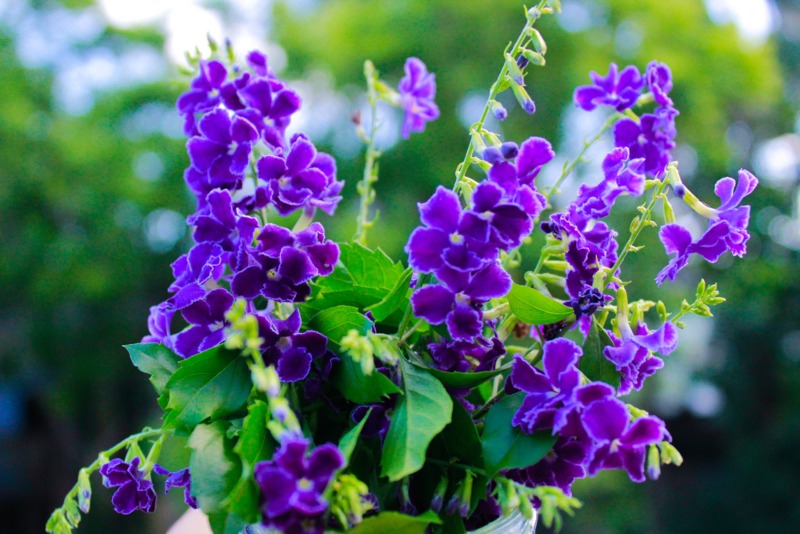
This tropical plant is a great addition to a garden all year long. It blooms with lovely purple flowers from the spring up until the weather changes in the fall. However, that isn’t the end of this plant’s showy period.
In the fall, they develop bright yellow berries that bring bursts of color to any garden or flower bed. The duranta plant can be grown in zones 10 and 11. The other zones are simply too cool for this Central American import.
Light and Temperature Requirements
The duranta plant needs full sunlight to create its beautiful flowers and berries. If this plant gets shade regularly, it will not be as full and look sparse. The duranta plant can’t tolerate temperatures under 40 degrees. However, there is no limit to how hot they will tolerate. Even days of 100 degrees plus temperatures won’t adversely affect it.
Watering
As a tropical plant, the duranta plant likes to have plenty of water. For durantas that are outdoors, they need about 1″ of rain each week. If you don’t get that in your area, you will have to make it up with waterings. If your area is especially hot, it may need to be watered more often because the water will evaporate more quickly. If you are keeping it in a container, water it whenever the soil becomes dry. While the duranta does like humidity, it can also thrive in dry air.
Soil & Fertilizing
The soil should be rich and loamy. This helps the plants to get all of their growing done in one season. They will tolerate soil that is lean, but they do have to have excellent drainage. Sitting in water too long can severely damage the roots. If you’re growing it in a container, potting soil generally drains well. If you are growing it outdoors, you can add some sand or rocks to the soil to help it to drain better. The duranta plant generally needs no fertilizer added to the soil as long as the soil is rich and full of organic materials. If the soil is rocky or lean, you can give it an all-purpose fertilizer every month of the growing season.
Deadheading and Pruning
You will likely need to prune your duranta plant to keep it from taking over a larger area. This is especially true in regions where it will live through the winter. If you skip pruning a healthy duranta can grow over structures and paths and take out the other plants nearby. The duranta only sprouts flowers on its new growth, you can prune the plant back for the winter, knowing that the spring will bring it fast growth that will flower.
Propagation
It’s easy to propagate duranta because it will grow from cuttings of the leaves, the stems, and from softwood portions of the plant. In the spring, cut off the appropriate part of the plant and put it in either a sterile mix of potting soil or into perlite. Cover it with something, such as a container or plastic wrap, to keep the water in to keep it moist. In the springtime, this plant has active growth hormones, so expect it to begin growing soon.
Toxicity
The duranta plant has lovely berries that brighten up fall flower beds. However, these berries look tasty but are poisonous, and that’s a dangerous combination. If you have children or pets in your home, you might want to make sure they know about their toxicity or perhaps wait a few more years to plant it.




